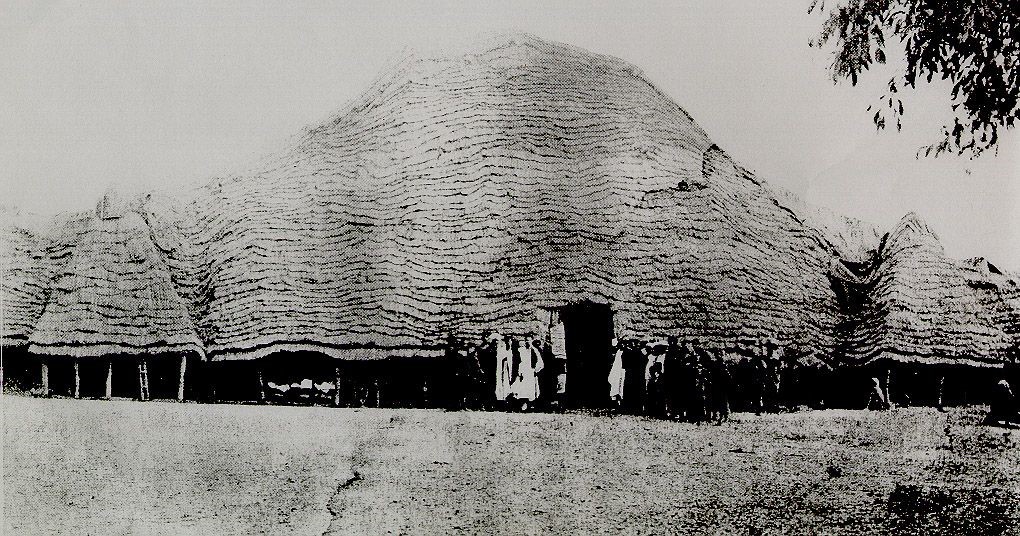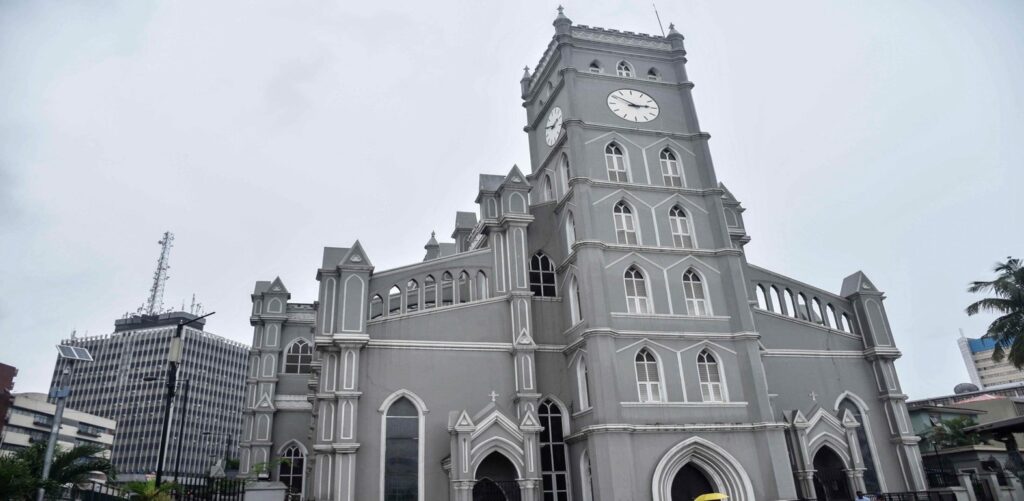Nigeria, a West African nation with a population of over 200 million people, is a melting pot of diverse cultures, languages, and traditions. The country’s rich history is reflected in its architectural landscape, which has evolved over centuries of innovation, adaptation, and transformation. From the ancient mud-brick walls of Kano to the modern high-rises of Lagos, Nigerian architecture is a testament to the nation’s multifaceted identity and its dynamic interplay between tradition and progress.
Nigeria, a country of immense cultural diversity and historical richness, boasts an architectural landscape that spans centuries of innovation, adaptation, and transformation. From the humble mud huts of traditional villages to the awe-inspiring skyscrapers of modern cities, Nigerian architecture reflects the nation’s multifaceted identity and the dynamic interplay between tradition and progress. This article delves deep into the evolution of architecture in Nigeria, exploring the milestones, influences, and challenges that have shaped the built environment of this vibrant West African nation.

The origins of Nigerian architecture lie in the ingenious designs of its indigenous people, who crafted structures that seamlessly harmonised with the local environment and catered to specific cultural and climatic needs. From the Sahelian north to the tropical south, Nigeria’s diverse regions saw the development of unique architectural styles. The mud-brick buildings of the Hausa-Fulani people in the North, the elaborately adorned Yoruba courtyard houses in the Southwest, and the distinctive bamboo-walled dwellings of the Igbo people in the Southeast stand as prime examples of the deeply rooted connection between architecture and culture.
Nigeria’s architectural journey is also deeply rooted in its ancient civilisations. The Nok culture, dating back to around 1000 BC, left behind intricate terracotta sculptures that offer glimpses into their architectural practices. The Nok people’s settlements were characterised by circular huts made from materials readily available in their environment. These architectural forms not only provided shelter but also reflected the culture’s connection to nature.

The arrival of European colonial powers in the late 19th century brought about significant changes to Nigeria’s architectural landscape. The colonial administration introduced European architectural styles, resulting in the fusion of traditional and colonial aesthetics. Buildings constructed during this period, such as government offices and churches, often featured elements of European neoclassical and Victorian architecture combined with local materials and techniques.
The Lagos Cathedral and Government House in Lagos exemplify this colonial legacy, reflecting the blending of European design principles with the functional needs of governance and the growing Christian population.
The dawn of Nigeria’s independence in 1960 heralded a new era of architectural expression. The country’s architects, imbued with a sense of national pride and a desire to create a modern identity, embraced innovative design concepts. Pioneers like Demas Nwoko and Festus Nwaodo crafted structures that combined modernist principles with indigenous motifs. The National Theatre in Lagos, a bold and iconic symbol of Nigerian culture, is a testament to this fusion, featuring a distinctive exterior adorned with traditional patterns.
The oil boom of the 1970s brought unprecedented wealth to Nigeria, fuelling rapid urbanization and transforming cityscapes. Lagos, the nation’s largest city, witnessed the emergence of towering skyscrapers, luxury hotels, and shopping complexes. These architectural marvels, designed to cater to the growing demands of a rapidly urbanising population, reshaped the urban fabric while embodying the aspirations of a modern Nigeria.
In recent years, architects in Nigeria have confronted the urgent need for sustainable designs that address environmental concerns and limited resources. Embracing indigenous building materials and traditional construction techniques, contemporary architects strive to create structures that are energy-efficient and environmentally friendly.
However, as Nigeria modernises, it also faces challenges related to urban planning, infrastructure, and the preservation of its architectural heritage. Rapid urbanisation has led to issues of overcrowding, inadequate housing, and strained infrastructure. Furthermore, many traditional buildings are deteriorating due to neglect and lack of preservation efforts. Efforts are underway to document, restore, and adapt these structures to contemporary needs, ensuring that Nigeria’s rich architectural legacy endures.
Nigeria is a country rich in cultural and architectural diversity. Its architectural beauty reflects its history, traditions, and the blend of various ethnic groups. Here are some examples of architectural beauty in Nigeria:
- Ancient City of Benin: The city is known for its historic walls and moats, which are considered one of the world’s largest man-made earthworks. The Benin Bronzes, intricate bronze and ivory sculptures are also remarkable examples of ancient Nigerian artistry.
- Zuma Rock: This large monolith is located in Niger State and is considered a significant natural landmark. Its distinct shape and prominence make it a subject of folklore and artistic representation.
- Lekki Conservation Centre: This centre, located in Lagos, offers a blend of natural beauty and architectural innovation. It is known for its canopy walkway that provides stunning views of the surrounding wetlands and wildlife.
- Osun-Osogbo Sacred Grove: This UNESCO World Heritage site is a sacred forest along the banks of the Osun River. It features numerous sculptures, shrines, and artworks dedicated to Yoruba deities.
- National Mosque Abuja: With its elegant architecture and impressive dome, the National Mosque in Abuja is a significant symbol of Islamic culture in Nigeria.
- Great Ife University (Obafemi Awolowo University): The university’s campus in Ile-Ife showcases a blend of modern and traditional Yoruba architectural elements, creating a visually appealing and culturally significant environment.
- Emir’s Palace, Kano: This palace in Kano is an excellent example of traditional Hausa-Fulani architecture. It’s a complex of buildings with intricate designs, showcasing the region’s cultural heritage.
- Calabar Carnival Village: While not strictly architectural, this annual event showcases the vibrant culture of Nigeria through elaborate costumes, music, and dance, creating a unique visual spectacle.
- National Arts Theatre, Lagos: Designed in the shape of a military hat, this iconic structure is a symbol of Nigeria’s commitment to the arts and cultural expression.
- Idanre Hills: These hills feature ancient settlements and structures, including a network of paved paths, old houses, and shrines. The site offers both historical and natural beauty.
These are just a few examples of architectural beauty found throughout Nigeria. The country’s diverse cultural heritage is reflected in its buildings, monuments, and landscapes, making it a fascinating destination for those interested in exploring its architectural history.
The evolution of architecture in Nigeria embodies the nation’s journey through history, culture, and development. From the resilience of traditional vernacular styles to the impact of colonialism, the pride of independence, and the challenges of modernization, Nigerian architecture encapsulates a narrative of adaptation and innovation.
As Nigeria continues to grow and transform, architects and urban planners will play a vital role in shaping the country’s physical environment while honouring its cultural heritage. Balancing tradition and progress, sustainability and modernity, Nigeria’s architecture will undoubtedly remain a testament to its dynamic spirit and enduring identity.
Sources
- https://en.wikipedia.org/wiki/Architecture_of_Nigeria#:~:text=Architecture%20of%20Nigeria%20was%20historically,style%20and%20utility%20of%20buildings.
- https://guardian.ng/life/pre-colonial-traditional-architectures-of-nigeria/
- https://www.researchgate.net/figure/The-evolution-of-Nigerian-Architecture-Source-Adapted-from-Prucnal-Ogunsote-2001_fig1_312029614
- https://www.sta-design.com/the-evolution-of-nigerian-architecture/




